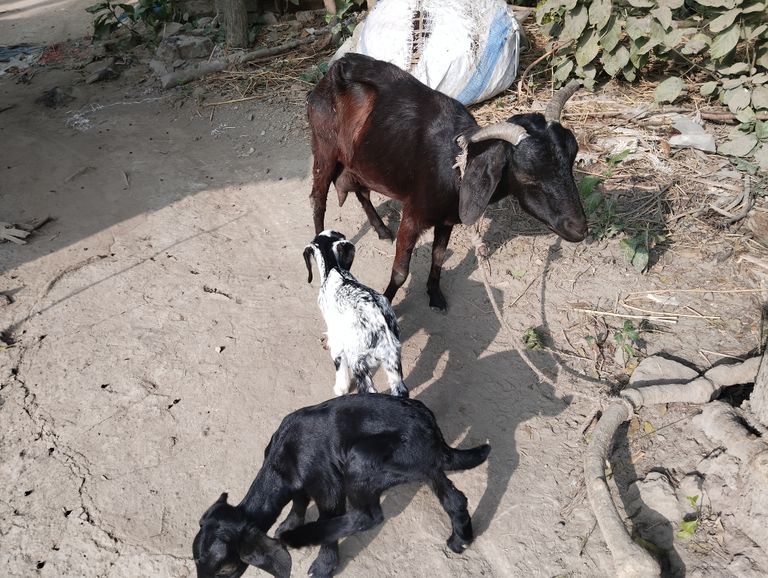
Black Bengal Goat Farming A Complete Guide.
Black Bengal goats are a highly valued breed native to Bangladesh, known for their excellent meat quality, adaptability, and high fertility rates. These goats are small in size but play a significant role in the livelihoods of rural farmers. In this blog, we will explore the benefits, management practices, and key considerations for successful Black Bengal goat farming.
Why Choose Black Bengal Goats?
- High Meat Quality
Black Bengal goats are renowned for their tender, flavorful meat, which is in high demand. The meat fetches a higher price in both local and international markets.
- Adaptability
This breed thrives in harsh climates and is highly resistant to diseases, making it suitable for regions with varying environmental conditions.
- Low Maintenance Costs
Black Bengal goats require minimal feed and care compared to other breeds, making them cost-effective for small-scale farmers.
- High Reproductive Rates
They reproduce quickly, with an average kidding of 2-3 kids per birth, often occurring twice a year.
- Skin Quality
The skins of Black Bengal goats are of excellent quality and are highly sought after in the leather industry.
Setting Up a Black Bengal Goat Farm
- Selecting a Location
Choose a location with adequate space, proper ventilation, and access to clean water. Ensure the farm is located away from busy roads to minimize stress for the animals.
- Housing
Space Requirement: Provide at least 15-20 square feet of space per goat.
Design: Elevated wooden floors are ideal to keep the goats dry and prevent diseases.
Ventilation: Ensure proper airflow to maintain a healthy environment.
- Feeding Management
Black Bengal goats are browsers and prefer natural vegetation. However, for optimal growth and production:
Diet: Include a mix of green fodder, dry fodder, and concentrate feed.
Minerals: Provide mineral blocks and supplements to prevent deficiencies.
Water: Ensure a constant supply of clean drinking water.
- Breeding
Breeding Age: Female goats are ready for breeding at 8-9 months.
Natural vs Artificial Breeding: Both methods can be used, but natural breeding is more common.
Kidding: Provide special care and a clean environment during kidding to ensure the safety of the mother and kids.
Health and Disease Management
- Common Diseases
Black Bengal goats are generally disease-resistant, but they may still encounter issues like:
PPR (Peste des Petits Ruminants)
Foot-and-mouth disease
Worm infestations
- Preventive Measures
Vaccination: Regular vaccinations are crucial to prevent common diseases.
Deworming: Conduct deworming every 3-4 months.
Hygiene: Keep the housing clean and ensure proper waste disposal.
- Signs of Illness
Look for symptoms like loss of appetite, abnormal behavior, or reduced milk production. Consult a veterinarian immediately if these signs appear.
Economic Benefits of Black Bengal Goat Farming
- Low Investment, High Returns
With minimal initial investment, farmers can achieve significant profits through meat, milk, and skin sales.
- Income Diversification
Goat farming provides an additional source of income alongside crop farming.
- Market Demand
The growing demand for organic, high-quality meat ensures steady market opportunities.
Challenges in Black Bengal Goat Farming
- Lack of Knowledge
Many farmers are unaware of modern farming techniques, leading to lower productivity.
- Market Access
Remote farmers may struggle to access profitable markets.
- Disease Outbreaks
While rare, disease outbreaks can cause significant losses if not managed promptly.
Black Bengal goat farming is an excellent venture for small and large-scale farmers alike. With proper management, care, and market access, this breed can provide substantial economic and nutritional benefits. Whether you're a seasoned farmer or a beginner, investing in Black Bengal goats can be a rewarding experience.
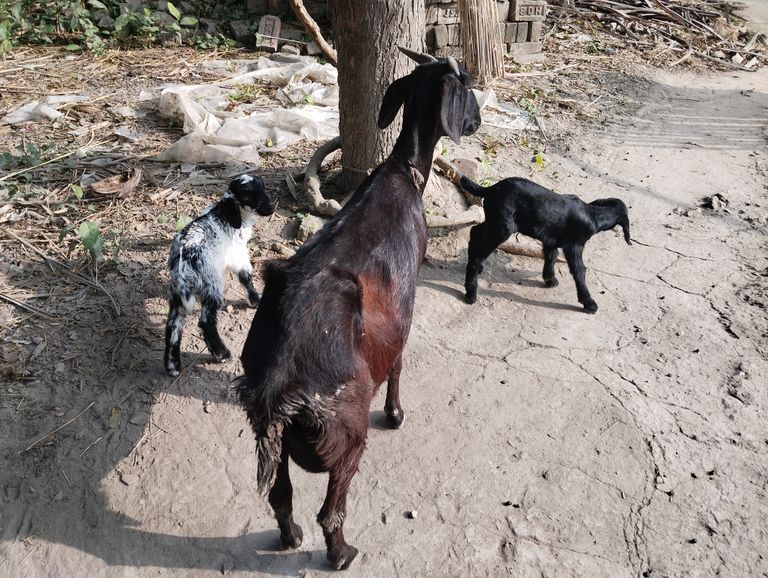
How to Take Care of Baby Goats: A Comprehensive Guide
Baby goats, or kids, are adorable and lively creatures that require proper care to grow healthy and strong. Whether you're raising goats for milk, meat, or as pets, taking care of their babies requires attention, time, and dedication. Here's a comprehensive guide to help you care for your baby goats.
- Preparing for the Arrival of Baby Goats
Before the kids are born, ensure you are ready with the necessary supplies. This preparation is critical to provide a safe and comfortable environment for both the mother goat (doe) and the kids.
Essential Supplies:
Clean and dry bedding (straw or wood shavings)
Heat lamp for cold weather
Towels for drying newborns
Colostrum replacer (in case the mother cannot nurse)
Feeding bottles and nipples
- Care During Birth
Most goats deliver kids without complications, but it’s good to be prepared in case intervention is required.
Observe the doe for signs of labor, such as restlessness, nesting behavior, or discharge.
Once the kid is born, gently dry them with a towel and ensure their nose and mouth are clear for breathing.
Allow the mother to lick and bond with the kids, as this helps stimulate circulation and breathing.
- Feeding Baby Goats
Proper nutrition is the cornerstone of healthy development in kids.
First Feeding:
The first milk, colostrum, is crucial for the kid’s immune system. Ensure the baby goat drinks colostrum within the first two hours of birth.
If the mother cannot produce colostrum, use a high-quality colostrum replacer.
Bottle-Feeding:
If the kid is orphaned or rejected by the mother, you’ll need to bottle-feed.
Use goat milk or a specialized goat milk replacer. Avoid cow milk, as it may upset their stomach.
Feed every 4-6 hours during the first week, gradually reducing frequency as they grow.
- Housing and Warmth
Baby goats are sensitive to cold, especially in their first few weeks.
Keep them in a clean, dry, and draft-free shelter.
Use a heat lamp to maintain a warm temperature, especially in colder months.
Provide soft bedding to keep them comfortable.
- Health Care
Keeping your baby goats healthy requires regular observation and preventive measures.
Vaccinations:
Consult your veterinarian for a vaccination schedule. CD&T vaccines (for Clostridium and tetanus) are commonly recommended.
Deworming:
Worm infestations can affect growth and health. Regularly deworm the kids as per veterinary guidance.
Hoof Care:
Start hoof trimming early to prevent deformities and infections.
Common Health Issues:
Diarrhea: Often caused by overfeeding, improper milk replacers, or infections. Keep the kids hydrated and consult a vet if symptoms persist.
Pneumonia: Ensure the housing is warm and dry to prevent respiratory issues.
- Socialization and Exercise
Goats are social animals and thrive in the company of others.
Let the kids interact with their mother, siblings, and other goats.
Provide a safe space for them to play and exercise, which helps in physical and mental development.
- Weaning and Transitioning to Solid Food
Around 6-8 weeks of age, kids can start transitioning to solid food.
Introduce small amounts of hay, grass, and grain gradually.
Provide clean, fresh water at all times.
Ensure they are fully weaned by 8-12 weeks.
- Monitoring Growth and Development
Regularly check the weight and overall condition of your baby goats to ensure they are growing well. A healthy kid will be active, have a shiny coat, and exhibit good appetite.
Caring for baby goats requires patience, knowledge, and love. By providing proper nutrition, a safe environment, and regular health care, you can ensure that your kids grow into healthy, happy, and productive goats. Whether you are a seasoned farmer or a first-time goat owner, this guide will help you raise thriving baby goats.
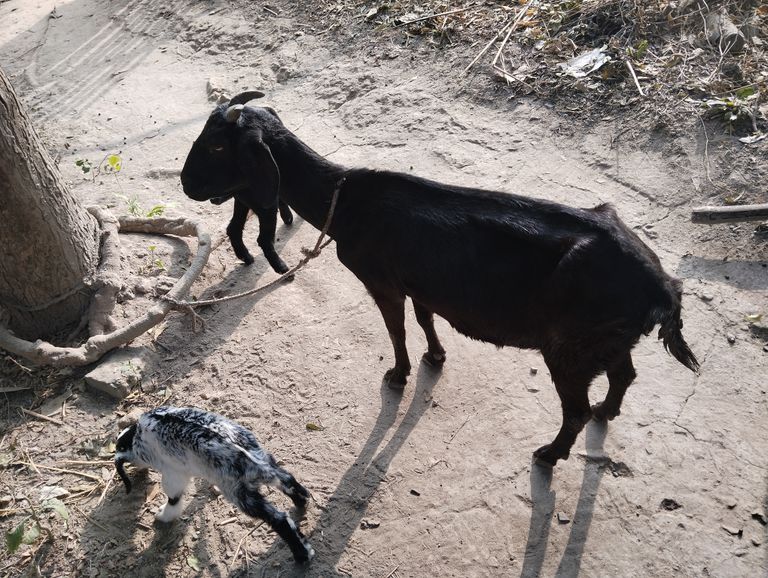
Goat Feed: A Comprehensive Guide
Goats are versatile animals known for their ability to thrive in diverse environments. Whether raised for milk, meat, or fiber, proper nutrition is essential for their health and productivity. This blog provides an in-depth look at goat feed, including types, nutritional requirements, and feeding practices.
- Understanding the Nutritional Needs of Goats
Goats are ruminants, meaning they have a specialized digestive system that allows them to break down fibrous plant material. Their diet must provide essential nutrients, including:
Carbohydrates: For energy. Found in grains and forage.
Proteins: Crucial for growth and milk production. Found in legumes, alfalfa, and soybeans.
Fats: Provide additional energy. Found in seeds and oils.
Vitamins and Minerals: Essential for bone health, reproduction, and overall well-being.
- Types of Goat Feed
There are three primary categories of goat feed:
a. Forage
Forage forms the bulk of a goat's diet.
Grass: Bermuda, ryegrass, and fescue.
Legumes: Alfalfa and clover provide high protein.
Browse: Shrubs, leaves, and twigs are natural favorites.
b. Grains
Grains supplement forage to provide extra energy. Common options include:
Corn
Barley
Oats
c. Supplements
Supplements ensure goats receive a balanced diet:
Mineral Blocks: Provide essential minerals like calcium and phosphorus.
Salt Licks: Help balance sodium levels.
Concentrates: Blend of grains, protein meals, and minerals.
- Feeding Practices for Different Stages
Goats have different nutritional needs depending on their age, breed, and purpose.
a. Kids (Baby Goats)
Colostrum: Vital within the first 24 hours for immunity.
Milk: Continue with goat milk or milk replacer for 8-12 weeks.
Starter Feed: Introduce high-protein pellets at 3 weeks.
b. Pregnant and Lactating Does
High-energy diet with extra grains and alfalfa.
Adequate calcium and phosphorus to prevent milk fever.
c. Bucks (Male Goats)
Moderate energy intake to prevent obesity.
Adequate protein during breeding season.
d. Meat Goats
High-energy diet for rapid weight gain.
Grain-based supplements in finishing stages.
Common Feeding Mistakes to Avoid
Overfeeding Grain: Can lead to acidosis, a fatal condition.
- Inadequate Forage: Always ensure access to hay or browse.
- Lack of Clean Water: Dehydration impacts digestion and health.
- Feeding Moldy or Spoiled Feed: Causes digestive problems and toxicity.
- Tips for Effective Goat Feeding
Always provide fresh water.
Use feed troughs to prevent contamination.
Rotate pastures to maintain forage quality.
Monitor goat body condition and adjust feed accordingly.
Consult a veterinarian or livestock nutritionist for personalized feeding plans.
Feeding goats properly is not just about filling their stomachs but ensuring their overall health, productivity, and well-being. A balanced diet tailored to their life stage and purpose will result in healthy, happy goats. By understanding their nutritional needs and following best feeding practices, you can ensure your herd thrives.
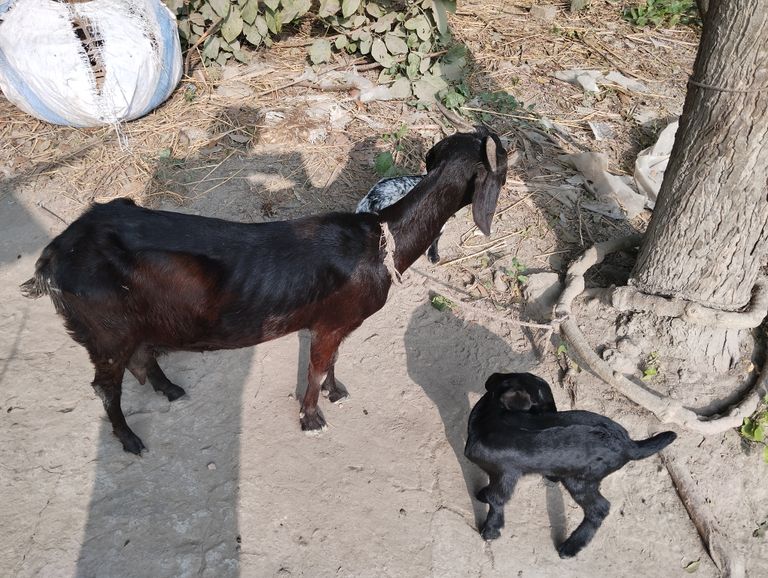
Reasons Why Dairy Goats Do Not Flower
Dairy goats are vital livestock for smallholder farmers and commercial goat keepers, as they produce milk that can be a significant source of income and nutrition. However, when it comes to their reproductive health and breeding, a common concern arises: why do some dairy goats fail to “flower,” which is a term often used metaphorically to describe their inability to conceive or breed successfully. Let’s explore the various reasons and solutions.
- Poor Nutrition
The diet of a dairy goat significantly impacts its reproductive health. Goats require a balanced diet rich in essential nutrients such as protein, vitamins, and minerals. Deficiencies can lead to delayed puberty or irregular estrous cycles.
Cause: Lack of energy or protein in the diet.
Solution: Provide high-quality forage, concentrate feed, and mineral supplements.
- Hormonal Imbalance
Reproductive hormones regulate the estrous cycle and ovulation in goats. An imbalance can prevent a goat from coming into heat.
Cause: Stress, poor health, or genetic predisposition.
Solution: Consult a veterinarian for hormonal therapy or treatment to restore balance.
- Health Issues
Underlying diseases or infections can impact fertility. Common problems include uterine infections, parasites, or diseases like brucellosis.
Cause: Poor hygiene or exposure to infected animals.
Solution: Regular health check-ups, vaccination, and maintaining a clean living environment.
- Age Factor
Age plays a critical role in the reproductive capabilities of goats. Young goats that are underaged or older goats nearing the end of their reproductive cycle may not conceive.
Cause: Breeding too early or too late in life.
Solution: Breed goats at the appropriate age, usually between 8–12 months for the first mating.
- Seasonal Breeding Behavior
Most goats are seasonal breeders, meaning they only come into heat during specific times of the year, typically influenced by daylight hours.
Cause: Off-season breeding attempts.
Solution: Plan breeding during the goat’s natural breeding season.
- Stress and Environment
Environmental stress, such as overcrowding, extreme temperatures, or inadequate shelter, can disrupt the goat’s reproductive cycle.
Cause: Stress from poor management or harsh living conditions.
Solution: Provide a comfortable and stress-free environment with ample space and shelter.
- Genetic Factors
Certain goats may have genetic issues that prevent them from reproducing. These can include chromosomal abnormalities or inherited infertility.
Cause: Poor breeding practices.
Solution: Avoid inbreeding and select goats with strong reproductive traits for breeding programs.
- Male Fertility Issues
Sometimes, the problem lies with the buck rather than the doe. A buck with low sperm quality or libido will fail to impregnate the female.
Cause: Poor health or old age of the buck.
Solution: Ensure the buck is healthy, of breeding age, and has been evaluated for fertility.
- Silent Heat
In some cases, goats experience silent heat, where they ovulate but show no visible signs of being in heat.
Cause: Stress, poor nutrition, or hormonal imbalance.
Solution: Observe the goat closely, or use a teaser buck to detect heat signs.
A dairy goat’s inability to flower or reproduce successfully is often a multifaceted issue involving nutrition, health, environment, and genetics. To address these problems, goat keepers should focus on proper management, regular veterinary care, and strategic breeding practices. With the right approach, the reproductive health of dairy goats can be significantly improved, ensuring productivity and sustainability in goat farming.
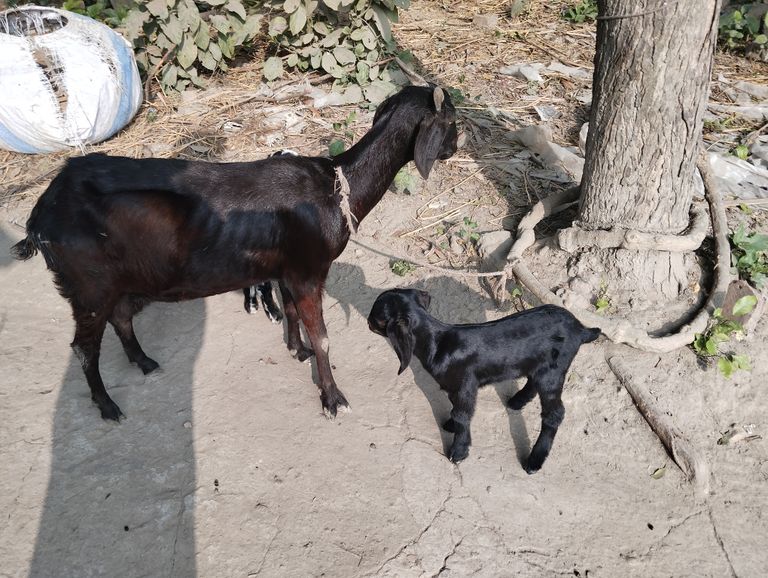
How to Build a Goat Shelter: A Comprehensive Guide
Goats are hardy animals, but they need proper shelter to stay healthy and productive. A well-designed goat house provides protection from harsh weather, predators, and diseases while ensuring their comfort. In this blog, we’ll guide you through the process of building a goat shelter that is cost-effective, durable, and functional.
Why a Goat Shelter is Important
Goats need a clean and dry environment to thrive. A proper shelter:
- Protects from Weather: Keeps goats safe from rain, wind, cold, and extreme heat.
- Ensures Hygiene: Prevents diseases caused by damp and dirty conditions.
- Enhances Productivity: Comfortable goats produce better milk and meat.
- Safety from Predators: A sturdy shelter keeps predators like dogs or wild animals away.
Factors to Consider Before Building a Goat Shelter
- Location:
Choose an elevated area to prevent waterlogging.
Ensure good drainage to keep the shelter dry.
Provide shade and ventilation to maintain a comfortable temperature.
- Size:
Allocate at least 10-12 square feet per goat for indoor space.
Plan for additional outdoor space for grazing and exercise.
- Materials:
Use locally available, durable, and affordable materials like bamboo, wood, tin, or bricks.
Ensure the materials are weather-resistant and easy to maintain.
- Design:
A slanted roof for rainwater drainage.
Adequate ventilation to prevent respiratory issues.
Separate sections for kids, sick goats, and storage.
- Budget:
Plan according to your budget while prioritizing essential features like durability and hygiene.
Step-by-Step Guide to Building a Goat Shelter
- Plan the Layout
Design a blueprint with separate areas for:
Sleeping space: A dry, elevated platform.
Feeding area: Space for hay, feed, and water troughs.
Kid section: A smaller, warmer area for baby goats.
Storage space: For feed, bedding, and equipment.
- Gather Materials
Essential materials include:
Foundation: Cement, bricks, or bamboo for elevation.
Flooring: Wood, cement, or bamboo slats for easy cleaning.
Walls: Bamboo, wood, or tin sheets for durability.
Roof: Tin sheets, thatch, or tiles for weather protection.
Doors/Windows: Wooden or metal frames for security and ventilation.
- Build the Foundation
Elevate the shelter 1-2 feet above the ground to prevent waterlogging.
Use strong materials like cement or bricks for stability.
- Construct the Floor
Use slatted flooring to allow waste to fall through, keeping the floor dry.
Ensure the slats are close enough to prevent goat injuries.